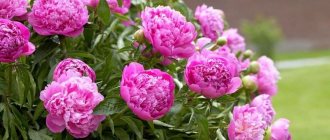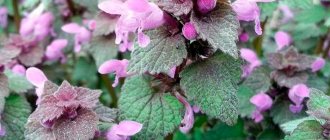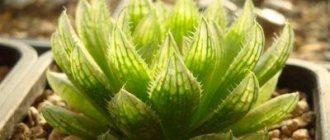The hit of the last decade in decorative floriculture is tree peonies. This is due to the renewed interest in natural plant forms in garden design. Being in the vein of this mainstream, garden designers remembered that in ancient times tree peonies were grown as tub or potted plants, and proposed reviving this tradition. In particular, for the purpose of decorating courtyards, winter gardens, patios, loggias, terraces, as well as for forcing them to bloom on certain dates - New Year, anniversary, March 8, wedding or other celebration.
The advisability of growing these marvelously beautiful plants in pots is also justified in cases where the garden area is small. In Japan, for example, with an eye to long-standing customs and for reasons of saving space, tree peonies are still grown in pots. Chinese flower growers have also long practiced the pot method of forcing peonies to decorate “flower alleys” for festive events, cutting and arranging bouquets. Other advantages of growing tree peonies not in open ground, but in containers, include the following factors:
- the possibility of deeper promotion of this valuable plant to regions with harsh winters;
- purchasing and planting well-groomed seedlings, even with buds, without reference to the period of the year;
- creating optimal conditions for the growth and development of plants - they are practically not affected by diseases such as nematodes, spotting, rust, and are protected from turf ants, green bronze and rot.
- transplanting from pots into open ground will not be stressful for the plants (their root system is not damaged); on the contrary, in such cases they grow faster, forming large shrubs, winter safely and begin abundant flowering earlier.
However, it should be remembered that the tree peony is by no means an indoor flower, and it must have a 3-month period of rest in the dark at an ambient temperature of 0 to 8 ° C. To do this, the container with the plant is moved from the open air to a fairly cool room without access to natural light, for example, to the basement. But the issue can be solved in a simpler way: in order to prevent the roots from freezing in the winter, you need to cover them well with earth.
Landing rules
For planting to be successful, you need to take into account a number of features.
It is important to choose the right bulbs and container for growing seedlings
Selection of capacity
To grow peonies at home, you need to choose the right pot. In this case, it is necessary to take into account the size of the plant
It is important to understand that culture needs a large area. A container with a diameter of 50-60 cm and a depth of 30-40 cm would be a suitable option.
Large varieties will require even more volume
Equally important is the presence of drainage holes at the bottom of the container. The optimal solution would be 5 liter pots
Note! Peonies can be grown in wooden boxes. To do this, they should be covered from the inside with dense non-woven material.
Preparing seedlings for planting
When purchasing a seedling, you should carefully examine the condition of the stem and root system. There should be no areas of rotting or mold on the planting material. If the plant has been damaged due to improper storage, excess fragments should be cut off. This is done with garden shears or pruning shears. It is recommended to make cuts obliquely and sprinkle with wood ash.
When growing peonies at home, it is worth treating them with a solution of potassium permanganate. This product has disinfecting properties. Before planting, the division should have 1-2 buds. If the eyes do not develop, the cutting must be placed in the refrigerator. When buds form, the plant can be planted in the ground.
Before planting, tubers should be treated with a solution of potassium permanganate.
Preparation or selection of soil mixture
In order for indoor peonies to develop well, it is recommended to fill the pots with a mixture of soil with the addition of peat. Plants must be planted in a container with a drainage layer. Thanks to this, it is possible to avoid stagnation of water, which provokes rotting of the roots.
Important! You can make the substrate yourself. To do this, it is recommended to mix humus, garden soil and river sand in equal parts
Step-by-step instructions for planting in a pot
To plant a crop correctly, you should do the following:
Place the tuber perpendicular to the moist soil
When choosing its location, it is important to ensure that the buds are directed upward. The flower reacts negatively to constant transplants. Therefore, it is not recommended to use containers that are too small for planting. Sprinkle the plant with soil on top and water it generously.
Important! In spring, you can feed the soil with fertilizer with a small amount of nitrogen. You can buy it in a specialty store
Planting peonies in a pot requires compliance with a number of conditions.
Choosing soil and pot for your home
Gardeners recommend using a soil mixture with peat added to fill the pots. Planting should be done in a container that has a drainage layer. This eliminates stagnation of moisture, which can lead to rotting of the roots.
You can make your own soil mixture by mixing the following components:
This composition requires components such as ash and superphosphate.
You need to select a pot based on the growth of the flower. It is worth taking into account that the plant requires a lot of space. The best option would be a pot with a diameter of 50-60 centimeters and a depth of 30-40 cm. If the species is large, then an even larger volume will be needed. It is also worth making sure that there are holes at the bottom of the container. The best option is 5 liter pots.
Further flower care
After planting a peony, in order for it to take root in a new place and grow as quickly as possible, you need to organize proper and balanced care for it.
The planted flower should be placed on an unshaded, light windowsill. Light should fall on the peony for at least 12 hours in a row. If there is not enough light, it is necessary to install additional lighting, organized using fluorescent lamps.
Indoors, it is recommended to place the pot on the windowsill of windows facing southeast and south. In this case, the flower should be protected from drafts. You can even place the container with the plant on a glazed balcony, terrace or loggia.
Water the plant regularly. Water must be added after the top layer of soil (2 cm thick) has completely dried. At the end of summer, watering is reduced to ensure a smooth transition for the flower to a dormant state. At the same time, the lighting period should be gradually reduced, as well as the room temperature.
Additional spraying of peony is not carried out. It also does not require high humidity in the room. However, it is forbidden to place a flower pot near heating appliances.
During the growth process, the peony should be periodically fed, since this plant consumes a lot of nutrients, which leads to the rapid depletion of mineral reserves in the soil. Feeding is carried out in three stages:
- After the formation of the first stems, nitrogen-potassium fertilizers need to be added to the container. They will stimulate the peony to grow shoots;
- During budding, fertilizing with potassium, phosphorus and nitrogen is carried out. These substances will allow the flower to form large buds;
- 14 days after the start of flowering, phosphorus and potassium are re-introduced, which will allow the plant to recover after the budding period.
Each season the fertilizing cycle is repeated.
How does a plant feel in an apartment or on a balcony?
Peony is a light-loving plant. Place it on the windowsill on the south, south-east side of the apartment. In dark rooms, additional lighting is turned on for 12–13 hours a day, and the phytolamp is removed in the evening.
Peony Buckeye Belle (Paeonia Buckeye Belle) - growing features
The plant does not tolerate drafts, so you should not keep the window open. When the room is ventilated, the pot is removed from the window. It does not like bushes and dry air; you need to choose a place for it away from heating devices.
Note! In the warm season, flower growers grow peonies on glazed balconies and loggias.
In the warm season, the plant feels good outdoors
Care
In order for a plant to grow healthy and strong, it is necessary to create for it the most comfortable conditions for growth and development.
The light-loving flower needs a lot of sunlight. Peony should be placed on windowsills on the south and east sides, where there is very light for 12 hours. In places with low light levels it is necessary to install additional sources of artificial light. Fluorescent lamps should be located at least 20 centimeters above the plant and work about 14 hours a day. Experienced gardeners recommend connecting special timers to artificial light sources to automatically turn on the light in the morning and turn off the device in the evening.
Peony has a negative attitude towards strong wind currents and heating devices located nearby. In summer, experienced gardeners recommend placing flower pots only on glass areas and balconies.
The plant needs regular and moderate watering. To prevent waterlogging of the soil, watering should be carried out only after the top soil layer has dried to a depth of 2 centimeters.
At the beginning of autumn, it is necessary to significantly reduce the number of waterings, the level of illumination and lower the temperature for the flower to comfortably adapt to the dormant period. Peony does not need spraying or high humidity levels.
To form bright, large and beautiful flowers, peony needs large quantities of nutrients.
- In the spring, your pet needs mineral fertilizers that contain large amounts of nitrogen and potassium. These mineral elements will allow the flower to form strong and powerful shoots.
- During the period of bud formation, it is necessary to feed the plant with potassium, phosphorus and nitrogen, and 2 weeks after the start of flowering, phosphorus and potassium must be added to the soil.
This system of feeding pets should be carried out annually.
If the rules of care are not followed, the plant will have a sluggish and unhealthy appearance, as a result of which it will not be able to form fragrant and beautiful flowers.
The most common problems when growing home peonies:
- sluggish leaf blades and lack of buds - low light levels;
- slow formation of new shoots - insufficient application of nitrogen fertilizers;
- rapid formation of green mass and absence of buds - deep planting of rhizomes.
If water gets on flowers, fungal diseases and dangerous pests may develop.
How to properly plant peonies in a pot, see the video below.
Protection from diseases and pests
A common disease of indoor peonies, caused by violation of maintenance conditions and care rules, is root rot. The sign is wilting of leaves and stems. You can save the plant in the initial stages of development by treating it with a fungicide.
Among the pests, the sap-feeding aphid is dangerous. It sucks liquid from the plant tissue and weakens it. If measures are not taken, if the shoots are massively populated, the flower may die. To combat, use a soap solution or insecticide.
In our opinion, it is even easier to grow a peony in a pot than in a flowerbed: it is easier to create an optimal microclimate in the house and there are no pockets of infection. The main thing is to plant correctly and carefully care for the plant.
Sources: Jane Eastaugh: Peonies. Luxurious flowers for home and garden.
Dig up and rinse peonies
Difficulties with digging up peonies are associated with the characteristics of their root system. Usually in the 4-5th year it grows to a great depth, individual rhizomes reach a length of 30 cm or more. The tips of the roots are most often thin and go even deeper into the soil. It is very difficult to dig them out without damage, so you should consider several recommendations:
1. Peonies should be dug up in dry and warm weather, so that the lump of earth that you will remove along with the roots is not too heavy.
2. Place the shovel 30-40 cm from the center of the bush and place it vertically. If you place it at an angle, you will most likely cut off the ends of the roots.
3. Dig up the bush from all sides and carefully remove it from the ground. You can place a support, such as a brick, under the tray of a shovel or the teeth of a garden fork. Thus, the shovel will act as a lever. Do not use too much force, otherwise you may break the tool. It’s better to dig around the bush more carefully again.
4. Under no circumstances pull the peony by its leaves (especially if the bush is more than 5-6 years old). Do not forget that before digging, the stems need to be cut, leaving stumps 5-10 cm high. It is for them, smoothly and effortlessly, that the plant should be pulled out.
Even if you did everything correctly, some of the roots will be damaged in any case. Clear the rhizome of clods of earth and rinse it thoroughly under running water, since a clean base is easier to mark and divide. This is also necessary in order to assess the condition of the buds and roots. After all, if a plant has stopped blooming in recent years, it is likely that it has already begun to rot.
Transplanting peonies
When to replant peonies
Wild peonies grow in one place for up to fifty years or even more. Hybrid varieties that originate from the officinalis peony can grow without replanting in the same area for no more than ten years; after this period, the bush must be divided and transplanted to another place. In addition, dividing and planting the bush is the easiest and most reliable way to propagate peonies. But for this purpose, 4-5 year old bushes are used, which have already fully bloomed once or twice. The fact is that the root system of peonies grows greatly over the years, so it is easier to cope with a younger rhizome than with an old one, so in order to ensure that the quality of flowering of your peonies does not decrease, it would be better to divide and plant the bushes every three to four years . Peonies are replanted in September.
In the photo: White peony flower
Replanting peonies in autumn
How to replant peonies? In autumn, the bush is dug at a distance of 25 cm from the rhizome, then carefully loosened with a pitchfork and removed from the ground. The rhizome is cleared of soil with a peg, then washed with a not very strong stream of water so as not to damage the fragile buds and eyes of peonies.
The above-ground part is cut off almost to the root. The washed rhizome is left in the fresh air so that the water drains and the roots slightly wither and become more elastic. Then the old thick roots are trimmed to a length of 10-15 cm at an angle of 45º.
Carefully examine the root and only then proceed with division.
If the bush is old, then it is most convenient to drive a wedge into its middle with a hammer, which will split the rhizome into several parts. Often in the middle of old rhizomes there are voids and rotten areas that need to be cleaned, disinfected with a strong solution of potassium permanganate, and then the sections are powdered with fungicide. The divisions should consist of part of the root collar with well-developed 3-4 eyes and several roots. You need to try to divide the rhizome into approximately equal parts, so that there are no too large sections that will hurt for a long time after transplantation, or too small ones that may die.
In the photo: Growing peonies in the garden
How to replant peonies
You need to plant the cuttings in the ground using the method that has already been described. The area with transplanted plants must be mulched with a seven-centimeter layer of peat for the winter; the mulch can be removed when reddish peony sprouts break through it in the spring. During the first two years after transplanting, peonies must develop a root system, so be patient and do not let young plants bloom. In the first year, pinch off all the buds that appear, the next year, leave just one bud on the bush and, when it bursts, cut it as short as possible and consider how well the flower matches its variety. If the match is incomplete, then you will have to pinch off the buds for another year, leaving only one, until the flower fully matches its variety. This may happen in the third year, or maybe in the fifth.
Peony from ancient times to the present day
There is an ancient legend about the origin of this popular flower. The Greek gods loved battles and did not deny themselves the pleasure of organizing a bloody battle. Peon treated the celestials. He successfully healed the Gods, including Ares himself. The god of healing was jealous of the successful healer, Asclepius decided to poison Peon. But he managed to find out about the treacherous plan. The doctor turned to the Gods asking for help. They turned it into a luxurious flower.
For centuries, this plant was most valued not for its beauty, but for its healing properties. Healers were engaged in growing and collecting peonies. Warriors of Ancient Rome, going on a military campaign, always took a peony root with them. Healers prepared an alcoholic extract from this part of the plant, which relieved diseases of the liver, stomach, and kidneys. The seeds were soaked in wine to obtain a remedy that relieves restless sleep and nightmares. And in England, peonies were planted in the front garden of the house to protect themselves from dark forces. In Rus', the Caucasian variety was used for practical purposes. It was a raw material for the production of paint. Peony seeds were considered an excellent seasoning for meat dishes, and its rhizomes were added to vegetable dishes.
Particular attention was paid to the flower in China. In the 16th century, there was a catalog of peonies in this country. It included over three dozen varieties. It was the Celestial Empire that became the main source of peonies. Flowers were incredibly expensive, purchased for royalty, royalty, nobles, and became decorations for estates and castles. The plant was brought to America by Europeans.
Peonies are very popular among gardeners
Wild peonies have several habitats. All of them are located in the Northern Hemisphere. Thickets of the plant can be found in Europe and Asia, the USA, and Canada. In our country, peonies grow:
- in the Caucasus region;
- in Siberia;
- in the Far East.
Due to the undemanding nature of the plants and the easy care of peonies, these flowers are very popular among gardeners in many countries.
Landing rules
The most favorable time for planting plants is the beginning of spring. To plant home peonies, you need to choose flower pots with a volume of at least 5 liters and a diameter of 25 centimeters. The optimal height of the planting container should be 45 centimeters.
Peonies can be planted not only in classic flower containers or pots. Wooden boxes, the inner surface of which is covered with dense non-woven material, are also quite suitable for this.
When making your own soil mixture, you need to mix river sand, humus, peat and garden soil. To this composition you need to add a small amount of bone meal, ash and superphosphate.
For planting, you need to select shoots from the root system of those plants whose age does not exceed 3 years. Planting material can be planted only after the first buds appear. Until this point, the shoots should be stored in the refrigerator.
List of basic activities that will help to properly plant a decorative peony:
- choosing a flower container;
- formation of a drainage layer, which may consist of fine pebbles, broken bricks and perlite (layer 3–5 centimeters);
- covering the pebbles with coarse sand (but not river sand!);
- filling the planting container to the middle with nutrient soil;
- placing selected roots on the ground, the buds of which should be directed upward;
- filling all voids with a nutrient mixture;
- formation of a surface peat layer;
- abundant soil moisture.
This flower has a negative attitude towards frequent transplants. Experts recommend not using very small planting containers for planting.
If all planting rules are followed, the plant will be able to form buds within a few months.
Drainage in the planting hole for peonies
Many novice gardeners, concerned about how to plant peonies in the garden, are interested in whether drainage is needed at the bottom of the hole? Quite often in the literature for drainage it is recommended to pour a layer of crushed stone, stones and broken bricks onto the bottom of the hole. But such a recommendation cannot be universal and it is not entirely clear when it will be useful. If the soil around the hole, especially from below, is clayey, there is no benefit from drainage, like shards at the bottom of a pot without holes - the water still has nowhere to go. And if the soil around the pit is sandy, you do not need drainage, but, on the contrary, clay in the bottom layer of the pit to retain moisture there longer.
Local drainage in the planting hole when planting peonies will not protect the flowers from nearby groundwater. In this case, it is necessary to install a general drainage system at the planting site that can lower the groundwater level. Or drainage grooves if the planting area is low. For the latter case, raised raised ridges have already been recommended.
Basic requirements for cuttings for growing peony seedlings
On peony divisions intended for sale, young roots extending from the rhizome and from the adventitious root are usually removed. Because these roots will still dry out before planting, and after planting they will rot. For peony divisions intended for planting in pots, large side roots do not need to be removed if they have not yet dried out. It is better to remove small lateral roots, as they will most likely die. A peony division with lateral roots forms a root ball better than the same one without lateral roots.
Before planting peonies in the ground, they are dried; at least not less than a day from the moment of dividing the bush. This is done so that the sections of the sections have time to cork, which increases the safety of the sections in the future from possible rotting. When planting peonies in pots, the first priority is the survival rate of young roots extending from the rhizome. Therefore, the division should be planted as quickly as possible after dividing the bush, before these roots dry out. To prevent rotting of peony cuttings, all cut areas are carefully treated with a fungicide. The most accessible and fairly effective fungicide is crushed charcoal.
What conditions must be observed when caring for decorative peony?
For good growth and lush flowering, perennials need suitable conditions.
Pay attention to the following points:
- temperature;
- watering, humidity level;
- lighting;
- application of fertilizers.
Temperature
In a very warm room, peony root formation stops. Recovers at a temperature of 10-15 °C. The plant overwinters at 5-8 °C.
Watering and humidity
Water the perennial with water at room temperature when the soil surface is dry to 1.5-2 cm. The liquid is distributed over the entire surface of the container; the flowers cannot tolerate excessive watering. The remaining moisture should exit through the drainage hole. At the end of summer, the frequency of watering is reduced: wait until the soil in the container dries completely, then only moisten the soil.
Note! The flower does not tolerate spraying or droplets falling on the leaves and petals.
Lighting
For the development of inflorescences, select the brightest place for peonies in the apartment. The south side of the room works well. It is not always possible to find a sufficiently illuminated place; in this case, peony lovers will be helped out by an LED phytolamp. The light spectrum ensures active growth. The device can be brought fairly close to the leaves; the LED has a low voltage, which increases its safety when water gets on the body. The time for using artificial lighting is reduced at the end of August, as preparations for the dormant period begin during this month.
Feeding
When the first stems appear, the soil begins to be fertilized. Feed the plant once every 30 days. For this purpose, prepared mixtures for perennial flowers are used; fertilizing stops at the beginning of autumn. Ash and sand are used as protection against mold; ready-made fertilizers with nitrogen are selected in flower shops. During the ripening period of the buds, potassium and phosphorus are added to the soil. When the shoots reach 10 cm in height, fertilize once every 14 days.
How to care for a peony in winter
In winter, reduce the frequency of watering. Place the pot in a cooler and less lit place. They do this in order not to provoke the beginning of the growing season. The flower is left dormant for the winter.
Varieties for home cultivation
First of all, you should decide which varieties can be grown in an apartment or house. The fact is that the peony is a rather tall and voluminous bush, which is unlikely to fit in an ordinary flower pot. And it is very difficult to grow such a plant in an apartment. Therefore, flower growers recommend choosing special varieties for home cultivation.
Garden varieties form bushes with a height of about 60–120 cm. Therefore, they are not suitable for apartments, as they require a lot of space, large pots and special care. For home use, low-growing species (patio peonies) that do not grow higher than 50 cm are best suited. Patio species form buds that are somewhat smaller in size than ordinary garden varieties. The color of flowers can be very diverse: from white to rich or dark burgundy. However, despite their small size, their flowers exude a pleasant aroma. Due to the small size of the plants, their root system is small and easily fits in a flower pot.
It is best to plant the following varieties of peonies in an apartment:
- Rome. Forms pink buds. Has a medium flowering period;
- Moscow. The plant blooms with red double flowers. This is a mid-early variety;
- Oslo. The bush produces simple raspberry buds. A very early flowering variety;
- London. It has an early flowering period. The buds are double and colored burgundy.
Such species can be grown on a windowsill with little effort and time.
Description
Peony is the only genus in the Peony family.
There are less than 40 officially recognized species of this plant, popular among gardeners, but the number of various varieties bred on their basis is several thousand. "Rose without thorns" was grown in ancient times. The beauty and medicinal properties of the plant are equally worthy of admiration. In the Celestial Empire, an amazing flower was considered the property of the emperor. A commoner who wanted to decorate the garden with a bright Peony faced the death penalty. The flower came to Russia during the reign of Peter I.
Peonies are perennial plants. There are herbaceous and tree-like species. In addition, special Ito hybrids were created through crossing. They received their name in honor of the Japanese breeder who was the first to succeed in increasing the number of Peony varieties. As a result, the color range of the petals has expanded and the duration of flowering has lengthened.
All types of Peony have a powerful rhizome. The leaves are pinnate or trifoliate. In early spring, the leaf blades are reddish in color, then become dark or light green. Before the dormant period they acquire a yellow color. As a rule, one bud appears at the top of the stem. But at the same time, many varieties also have side buds. They open alternately, significantly extending the overall flowering period of the bush.
Peony flowers are always large and vary in color from milky white to deep purple. Every year the color range is replenished with new shades; the only color with which breeders are still failing is black. But this, they believe, is only a matter of time.
Depending on the structure of the flower, Peonies are divided into single (with petals in one row), semi-double (petals are arranged in several rows), and double (petals are collected in a tight, lush rosette).
For a long time, Peony was considered exclusively a garden flower. But in recent years, he has confidently settled on balconies. Also, under proper conditions, it is possible to grow the plant indoors.
Suitable varieties
The first thing to do before planting is to choose a variety that suits your taste. The peonies themselves on the balcony must also be placed correctly. It is necessary to take into account the size and height of the bush, so that it has enough space. The shrub usually grows to a length of about one meter, but can grow longer.
Due to the small size of balconies, it is better to give preference to varieties of small sizes. The “Narrow-leaved Peony” variety is perfect for growing in such conditions; on average, it grows 30–60 cm in height. Also - dwarf peonies "Madrid", "Dublin" with a height of 30 - 50 cm. However, when growing low-growing varieties on the balcony, some difficulties may arise. Now, a large selection of peonies can be found in the online store.
Peony angustifolia
What varieties of peony can you grow at home?
Homemade peonies are bred in a pot, choosing varieties suitable for this purpose. The most famous include:
- Moscow is a low-growing species, the bush reaches 35 cm. A red flower with a diameter of 5-10 cm with bright yellow stamens. Flowering time is early summer. Unpretentious, does not like a lot of water, moderate watering is recommended;
- London. It reaches a height of up to 20 cm. A bush with large buds. Suitable for planting indoors, on balconies, and in open ground. Blooms in May;
- Rome grows up to 50 cm in length and blooms in June. It produces buds of a soft pink hue. The diameter of the flower is 7-10 cm;
- Oslo is a herbaceous peony, flowering time is early June - July. Height 50-55 cm. Overwinters without shelter, unpretentious appearance;
- Zhu Sha Pan is easy to care for, not a capricious flower, but does not like drafts.
Growing indoor peonies at home
Peonies are a spectacular decoration of gardens, a powerful bush with large and fragrant flowers. But growing such a bush at home is not easy. If it is not possible to create optimal conditions for growth for a potted peony, its shoots grow weak, sluggish, and flowering never occurs. Only with some effort can you ensure that a garden plant becomes a decoration of your residential interior; the result sometimes exceeds expectations.
Common varieties of garden peonies reach a height of 60-120 cm, so growing them indoors requires a lot of space. More popular among indoor plant lovers are low-growing varieties - patio peonies, reaching half a meter in height. Their varieties:
- “Rome” – variety with pink flowers of medium flowering period;
- “Oslo” is a variety with simple crimson flowers of very early flowering;
- “Moscow” – mid-early variety with semi-double red flowers;
- “London” is an early variety with double burgundy flowers.
The flowers of patio peonies are somewhat smaller in size than the flowers of garden herbaceous peonies, although they retain their fragrance. But they are also characterized by a smaller root system, which makes it possible to grow low-growing varieties in closed ground conditions. The color palette of these varieties is very diverse: from snow-white to dark burgundy. Flowers are simple, semi-double and double.
For planting in a pot, use rhizomes that are 2-3 years old. Under optimal conditions, they can begin to bloom within a few months of planting. There are 3 main conditions for successfully growing indoor peonies:
- 1. spacious capacity for the root system;
- 2. prolonged sunlight;
- 3. sufficient supply of water and mineral elements.
A pot for growing a peony must have a volume of at least 5 liters and a diameter of more than 30 cm. The depth of the pot must exceed the diameter and be at least 50 cm. Such plants do well in large wooden boxes lined with thick fabric. There must be drainage holes in the bottom of the container to avoid stagnation of water and souring of the roots.
Peony is planted in a pot in the spring. A layer of large pebbles or sand, broken bricks, and perlite is placed at the bottom of a suitable container for proper drainage, then the pot is filled halfway with a mixture of garden soil and peat. This layer is well moistened with water, and the rhizome is carefully placed on top with the buds facing up, trying not to damage them. Next, the rhizome is covered with soil, but it should be close to the surface, no deeper than 2-3 cm, otherwise the plant may not begin to grow. Peony does not tolerate transplantation well, so it should be planted immediately in a large pot.
The indoor peony is placed in a bright, unshaded place; it needs at least 12 hours of sunlight per day. An open balcony, loggia, or terrace is well suited for this. Indoors, the plant should be placed near a wide window in the south or southeast side, but in a place protected from drafts. When daylight hours are short, additional illumination is practiced using fluorescent lamps. Watering is regulated in accordance with soil moisture - after the top layer of soil 2 cm thick has completely dried. The plant does not need spraying and does not require high air humidity. But you should not place it near heating devices that create a flow of warm, dry air.
During the growth process, large indoor plants consume a large amount of nutrients, so the supply of mineral elements in the soil must be regularly replenished. When growing peonies, mineral fertilizers are applied in 3 stages:
- after the first shoots appear, nitrogen-potassium fertilizers are applied for shoot growth;
- during the budding period, fertilize with nitrogen, phosphorus and potassium to obtain large flowers;
- 2 weeks after flowering, potassium and phosphorus are added to restore plant resources.
At the end of summer, watering indoor peonies should be reduced to provide conditions for it to smoothly enter a state of dormancy. At this time, the length of the photoperiod is shortened and the growing temperature is reduced.
Even low-growing varieties of peonies are difficult to grow indoors. The root system of this plant needs space, and the above-ground part needs an abundance of light. Only by creating optimal growing conditions can peony bloom at home, even though this plant is considered unpretentious in the garden.
{SOURCE}
The necessary conditions
To get lush blooming peonies in your own apartment and grow a healthy bush, it should be as comfortable as possible. If the flower was planted improperly, the shoots will form weak. In this case, flowering may not occur.
Basic conditions that must be observed when growing peony at home:
- Wide and spacious pot.
- Compliance with light conditions.
- Proper watering and regular fertilizing.
To make the lush plant comfortable, you need to choose a pot of at least 5 liters. If you don’t want to plant it in a pot, you can replace it with a box. Whatever container is chosen, it is worth making drainage holes. Excess moisture that the flower does not need escapes through them.
Features of planting at different times of the year
Healthy and intact suction roots are the key to successful establishment of young plants
To determine how to plant peonies and when to do it, you need to have an idea of the characteristics of their root system.
- Its central, most massive part serves as a kind of storehouse for nutrients. It is this that supports the plant during wintering and protects it from the cold.
- Thinner processes extend from it. The density and abundance of flowering bushes depend on their condition, since replacement buds and young stems are formed on these roots. Sprouts in the form of light, thin root shoots are formed in the fall, in September.
- Another important part of the root system is the suction shoots, which can be thought of as a thin web that collects micronutrients and moisture. To avoid damaging it, when planting peonies it is necessary to prepare a wide and deep hole.
To choose the right moment when you can replant peony bushes, you need to know the peculiarities of crop adaptation at different times of the year.
in spring
Transplanting peonies in spring has one significant drawback: it is easy to be late with this work.
With the end of winter, the plants wake up. There is a rapid growth of suction roots. If you start replanting the bush during this period, these roots can be damaged, which threatens the death of the entire plant. It will not receive nutrition and will quickly use up the reserve that has accumulated in the massive central roots.
Important! Bushes that have been transplanted in the spring often become overgrown with a thick green mass. But next winter they do not survive, since over the summer their storehouse of useful substances is used up, and there are not enough of them for the winter
If you still replant the bushes after wintering, then this should be done as early as possible, immediately after the snow cover melts, before the plants awaken. By this time, the roots do not have time to wake up. They begin to develop in a new area.
In summer
In June and July, the crop actively grows green mass, and the suction roots have time to grow and gain a foothold in the soil in the spring. Their development slows down, but the roots actively extract moisture and nutrients. When buds form on the bushes, the main forces of the plant are directed to the flowers.
If you replant peonies in the summer, the suction roots will inevitably be damaged and the nutrition of the bushes will deteriorate. In the new area, neither the development of new roots nor the adaptation of old ones occurs. The only source of nutrition is the reserves already made by the plants. But there are not enough of them for wintering, which often leads to the death of peonies.
According to statistics, most bushes transplanted in summer wither within a month
in autumn
In autumn, peonies stop blooming and begin to prepare for winter. The green mass is not growing. Plants store nutrients. Their absorbent roots actively extract nutrients and grow quickly. This period is considered the best time to plant peonies. The bushes are ready to be divided and moved to a new site. The roots are ready for the winter cold.
One month is enough for the culture to take root normally. Before frost sets in, peonies have time to grow suction roots. In the northern regions, planting can be done as early as mid-August. In the middle zone, the optimal time is in September, and in the south it lasts until mid-October.
Note! When replanting bushes in the fall, it is important not to be late. On average, at the end of September there begins a period of active growth of storage roots, where plants retain a supply of necessary elements. They become denser and more voluminous
Transplantation must be carried out before this time, otherwise the bush will not survive the winter.
They become denser and more voluminous. Transplantation must be carried out before this time, otherwise the bush will not survive the winter.
On average, at the end of September there begins a period of active growth of storage roots, where plants retain a supply of necessary elements. They become denser and more voluminous. The transplant must be carried out before this time, otherwise the bush will not survive the winter.
Watering and fertilizing
During the season, the peony needs watering and feeding. Moisture is especially necessary for the plant during the formation of buds and buds. The bushes are watered as the top layer of soil 2–4 cm deep dries out. Excessive amounts of moisture negatively affect the health of the root system and can lead to diseases.
One bush requires 10–12 liters of water, which is applied at the root so as not to wet the leaves and flowers. Most often, watering is carried out once every 10–12 days. At the end of August - beginning of September, irrigation stops.
The soil around peonies must be loosened regularly to facilitate the passage of water and oxygen to the roots. In dry weather, the ground is mulched so that moisture remains in the soil longer.
Fertilizing is carried out with organic and mineral fertilizers in liquid form. To prepare the nutritional complex in 10 liters of water you need to dilute:
- manure – 1 kg;
- ammonium nitrate – 20 g;
- superphosphate – 20 g;
- potassium sulfate – 25 g.
The resulting solution is enough to water 2–3 bushes. Additionally, you can feed the plants with an infusion of horse manure.
Phosphorus and potassium must be added before mid-August. During the summer, you can use industrial complexes of mineral fertilizers for flowers.
How to plant and grow seedlings
Flower growers with many years of experience recommend planting shoots that are no more than three years old. Planting material can be planted as soon as the first buds appear.
How to do it right:
- Place the tuber perpendicular to the moist soil. When choosing a position, you want the buds to grow upward.
- It should be borne in mind that the flower has a negative attitude towards constant transplants. For this reason, small planting containers cannot be used.
- To check the recommended depth (2.5-5 cm), place the tuber at the top of the soil mixture. Compliance with this parameter is considered a priority when planting, as it will ensure the flowering of peonies.
- After determining this indicator, you need to mix water with the mixture so that it becomes wet.
- To ensure that the soil receives the right amount of nutrients before planting, you need to add compost. You can also use special organics.
- In the spring, fertilizer with a low nitrogen content should be added to the soil. You can purchase fertilizers in specialized stores.
Peonies from seed
The desire to learn how to grow peonies from seeds appears among gardeners who want to acquire plants of rare varieties. Such flowers cannot be found at your neighbors' dacha, in a store, or at the market. This method is also used for plant propagation. But you need to take into account that this process has a certain complexity and will require patience and time.
Growing peonies from seeds is not very popular because:
- you have to wait at least five years before flowers appear on the plant;
- during the growing process, you must follow all the rules in order to get the expected result;
- The properties of the plant are not always preserved.
Growing peonies from seeds will require patience and time.
When growing peonies from seeds, pre-dried and fresh fruits can be used. You can collect them from August 20 to September 15. This will create ideal conditions for germination. The seeds are immediately planted in the ground. The depth of the hole is 5 cm. Some seeds will sprout in April. It is possible that shoots will appear next year.
Features of caring for tree peonies in pots
- You should select spacious (up to 25-30 liters), thick-walled containers made of decorative ceramics, in which plants can be kept for 5-6 years without replanting. Containers made of wood or stone with outlet holes for good water drainage are also suitable. Pots made from these materials look visually good and reliably protect the earthen ball around the roots from overheating.
- It is also possible to plant peonies in plastic flowerpots, but in order to protect the roots from excessive fluctuations in ambient temperature, you need to dig them deeper into the soil, approximately equal to the surface of the soil in the garden.
- Hydrogel (3-4 spoons), initially added to the potting soil mixture, will also help protect plants from rapid drying out. After all, the soil in the container dries out quite quickly.
- It is advisable to apply fertilizers diluted with water and in reduced concentration. The soil balance in the local space of the container is easily disturbed if plant feeding is done incorrectly, “by eye”. In this case, the risk of excessive stimulation of root growth cannot be excluded.
- For plants in pots, foliar feeding once a month is well suited.
- It is preferable to water from below, pouring water into the pan.
- 65% topsoil and 35% perlite will ensure sufficient soil looseness and good drainage.
- Adult (5-6 year old) plants can be divided and planted in prepared containers.
Soil composition and preparation
In order to know how to grow peonies that will decorate the garden for many years, you need to familiarize yourself with the preferences of plants. The favorite soil for all varieties and types is loam. Moreover, these plants are suitable for soil with a slight deviation in the balance and a high content of alkaline elements. In loams, the clay component may predominate, which makes it heavier and complicates the supply of moisture and mineral components. In this case, mulching agents are added to the soil:
- peat,
- humus,
- sand.
If sand predominates in the soil structure, moisture will drain away too quickly, creating a risk of the roots drying out. Clay and humus are added to this soil for quality nutrition.
The best soil for all varieties of peonies is loam.
Gardeners often have a question about how to grow peonies in the country if the area is dominated by peat. This soil is not exactly a suitable environment for such plants. However, you can solve the problem by creating normal conditions for the flower. To do this, you need to add sand, wood ash, and organic mixtures to the soil.
How to save peonies before planting in spring
If the desire to purchase a peony rhizome of the desired variety at an attractive price turned out to be stronger than the reasonable decision to wait with the purchase until the right time, nothing terrible happened. Peonies can be saved at home and planted in the garden when the time comes.
First, you need to inspect the planting material. If rotten areas or other damage are found on the root of the plant, they must be cut out with a clean knife.
The cut areas are treated with a raspberry solution of potassium permanganate or brilliant green, or a solution of any fungicide.
If the peony rhizomes are in a dormant state, thin young roots are not visible on them and the growth buds have not yet awakened, the peony can be stored in the refrigerator. The herbaceous peony is wrapped in slightly damp moss or a flannel cloth dipped in a solution of phytosporin or plain water.
Then the root is put into a bag (not the one in which the plant was sold!). You must make holes in the bag with an awl for air circulation.











